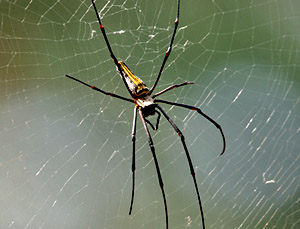New species of giant spider discovered in South Africa, Madagascar
 Johannesburg - Slovenian and US researchers have reported the discovery of a new species of spider of the giant Nephila (golden orb weaver spider) family in Africa and the island of Madagascar, the first new finding of this particular species in more than a century.
Johannesburg - Slovenian and US researchers have reported the discovery of a new species of spider of the giant Nephila (golden orb weaver spider) family in Africa and the island of Madagascar, the first new finding of this particular species in more than a century.
Reporting their findings in a recent issue of the open-access, peer-reviewed journal PLoS ONE, the scientists determined that the new species is the largest orb weaver known, whereby it is the females who are the larger, with a body length of 3.8 centimetres and leg span of 10-12 centimetres.
The find was reported by Matjaz Kuntner, chair of the Institute of Biology of the Slovenian Academy of Sciences and Arts and Jonathan Coddington, senior scientist and curator of arachnids and myriapods in the Department of Entomology at the Smithsonians National Museum of Natural History.
Nephila spiders are renowned for being the largest web-spinning spiders. They make the largest orb webs, which often exceed one metre in diameter.
The report noted that more than 41,000 spider species are known to science and some 400 to 500 new species are added each year. But for some well-known groups, such as the giant golden orb weavers, the last valid described species dates back to 1879.
Kuntner and Coddington described how they came on the trail of the new species in seeing a giant female Nephila from South Africa in the Plant Protection Research Institute in Pretoria which "did not match any described species."
Then, a South African researcher found a male and two females in Tembe Elephant Park and it became clear that the specimens were indeed a valid new species, the two scientists reported. The new species was designated "N. komaci" in honour of Andrej Komac, a fellow-scientist and friend of Kuntner's who was killed in an accident at the time of the discoveries.
Giant golden orb weavers are common throughout the tropics and subtropics. Thousands of Nephila specimens that have been collected are in natural history museums. (dpa)